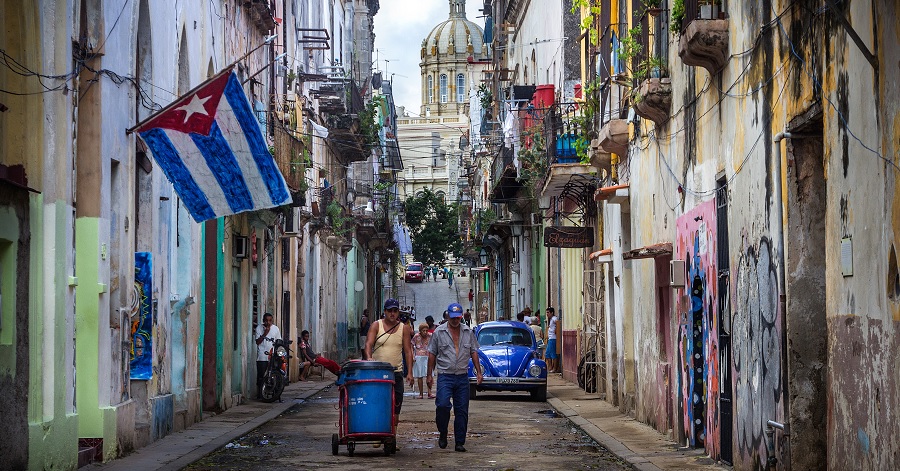The Cuban economy has remained stagnant for the last 38 years, while official inflation exceeded 400% in 2021.
The Díaz-Canel regime finds no response to the marked collapse in the standard of living on the island.
Cuba’s Marxist regime officially confirmed that the country recorded a growth of only 2% by the end of 2022, after having climbed 1.3% the previous year.
The meager results obtained were not able to compensate for the brutal collapse in activity of 10.9% in 2020 and the incipient fall of 0.2% in 2019.

Cuba once again lost the long-term growth trend for its economy, after having done so several times since the beginning of the so-called “special period” in the 1990s.
The country has failed to accumulate practically no growth in the last 38 years.
Per capita income in Cuba not only remains at backward levels compared to many countries in the region, but is also similar to what it was in the 1980s.
As if all this were not enough, the collapse in the level of activity occurred at the same time that prices were the protagonists of the most violent outbreak in the history of Cuba.
The dictatorship recognizes that the GDP deflator rose to 401.6% in 2021, a metric that collects the evolution of the general price level for the entire economy (and not just a basket like the CPI).
By the year 2022, “official” inflation on prices closely controlled by the regime exceeded 40% in November of last year.
The episodes of shortages caused the official prices to end up disappearing along with the goods on the gondolas of state stores, so that the effective inflation in the parallel markets was much higher.
Economist Steve Hanke estimates that prices would have skyrocketed by up to 130% in 2022 alone, and it is estimated that the GDP deflator index will yield a similar metric over the accumulated figures for that year.
The socialist system entered into a crisis when the Government had Miguel Díaz-Canel incurred significant fiscal imbalances in 2020 (a deficit of almost 18 points of GDP), in addition to the high deficits that were maintained in previous years.
Cuba registered an imbalance that averaged 5% of GDP between 2008 and 2019, and by 2021 it rose to 11.7% of GDP.
The only feasible alternative to finance the imbalances was monetization.
The Government unified the exchange market (with strong controls on access to foreign currency), eliminated the convertible peso (CUC) linked to tourist services and generalized the current peso for the bulk of the country’s transactions, a currency devoid of value and support.
The result was a violent inflationary explosion, followed by shortages after the entrenchment of numerous price and quantity controls throughout the island.
None of these policy methods managed to give concrete results for the stabilization of the country.
With information from La Derecha Diario

